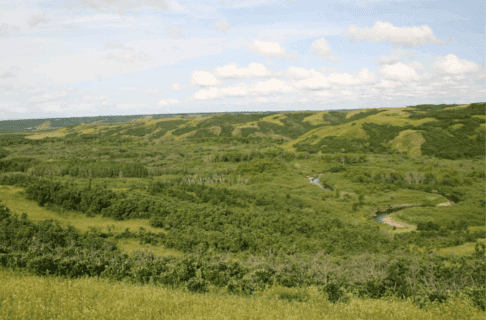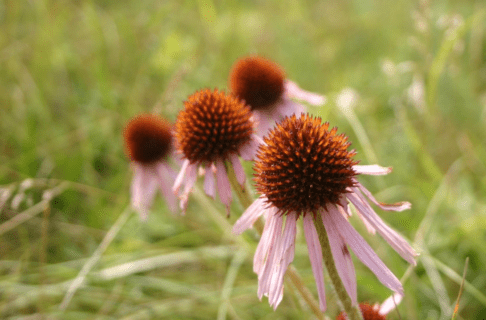Posted on: Wednesday May 1, 2013
Many people love to garden. But the way you garden can have a negative impact on the environment or a positive one. “Green” gardens are cheaper to maintain as they do not require high inputs of water, fertilizers, pesticides, or fossil fuels, and provide habitat for the many wild plants and animals that share our planet. Here are some tips to increase how “green” your garden is.
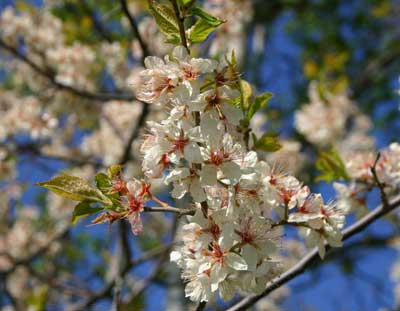
- Water your lawn infrequently or not at all. Frequent, light watering encourages grass to develop shallow roots, making it more vulnerable to drought than a lawn watered only occasionally but deeply.
- Thatch build up occurs when you overwater and over-fertilize your lawn; the abundant grass clippings that are generated cannot be decomposed by the soil organisms quickly enough. If you stop fertilizing and watering your lawn, your thatch problems will also disappear. Plus you won’t have to mow as often.
- Consider buying a push mower. The new push mowers are light and just as easy to push as a gas or electric mower. They also cost less to run, emit no greenhouse gases and are quiet, helping prevent Saturday afternoon noise pollution. Your lawn clippings will fall on the grass and fertilize new growth, reducing your need for chemical fertilizers.
Image: Small trees like this American Plum provide food for spring pollinators and edible fruits for you!
- Consider replacing some of the lawn you don’t use with trees, shrubs and/or flowers as they provide better habitat for beneficial insect and birds.
- Correct placement of trees and shrubs can also improve the energy efficiency of your home. Evergreens planted on the north side of your house block cold north winds while deciduous trees on the south side let the sun warm your home in winter but block it in the summer when it’s hot.
- Don’t even try to grow grass in dense shade. Cover with mulch or plant hardy, attractive, native ground covers like Western Canada Violet or Canada Anemone.
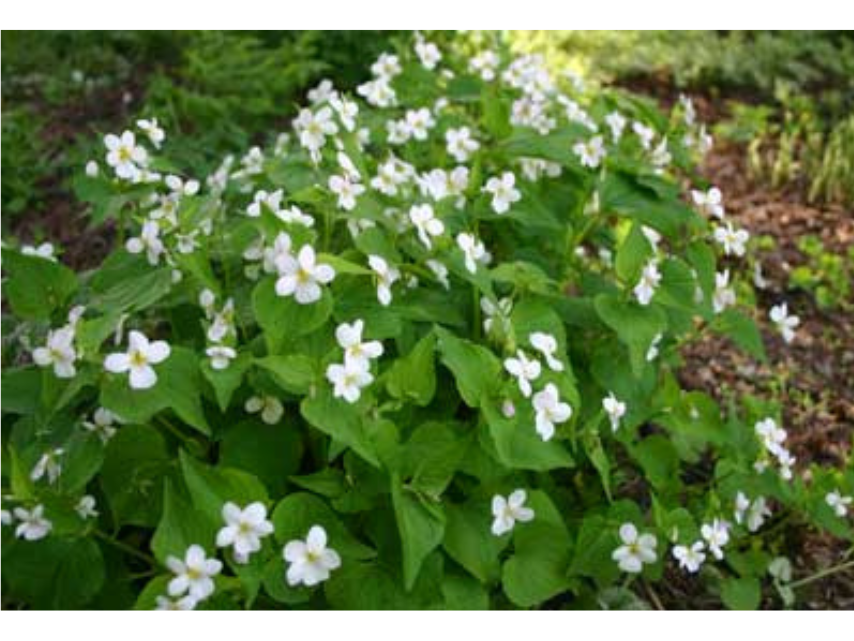
Western Canada Violet makes a great ground cover for shady areas.
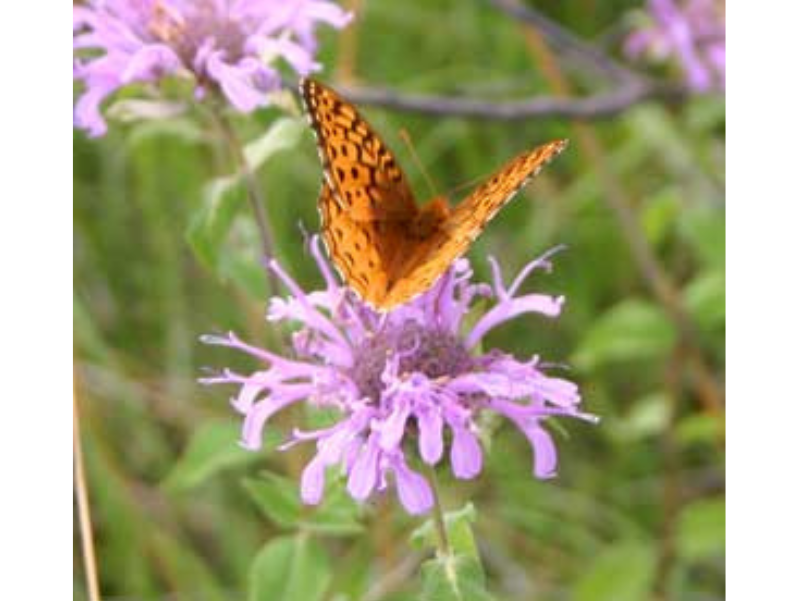
Butterflies love Wild Bergamot.
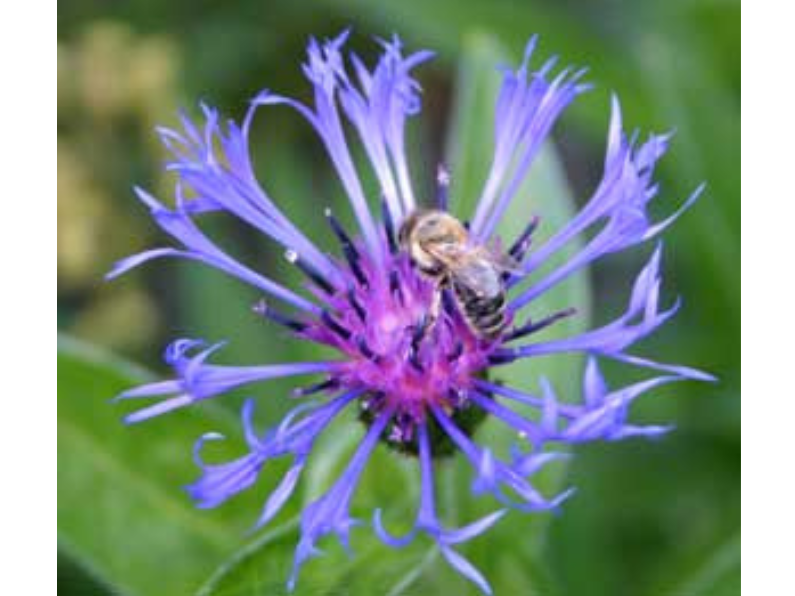
The exotic Bachelor’s Buttons attracts pollinators like bees.
- Grow at least some native plants in your yard. Native plants are adapted for the climatic conditions that we get in Manitoba, requiring no fertilizers or supplemental watering when grown in the proper spot. Native plants provide food for many birds and beneficial insects like bees and hoverflies.
- If you like to grow exotic plants, include some that provide food for birds and/or insects. Many horticultural species like hydrangeas, peonies, begonias and fancy “double flowers” are not very attractive to our native pollinators. Exotic plants that do provide food for pollinators include: columbine, delphinium, globe thistle, mint, oregano, Goat’s-beard, and many more.
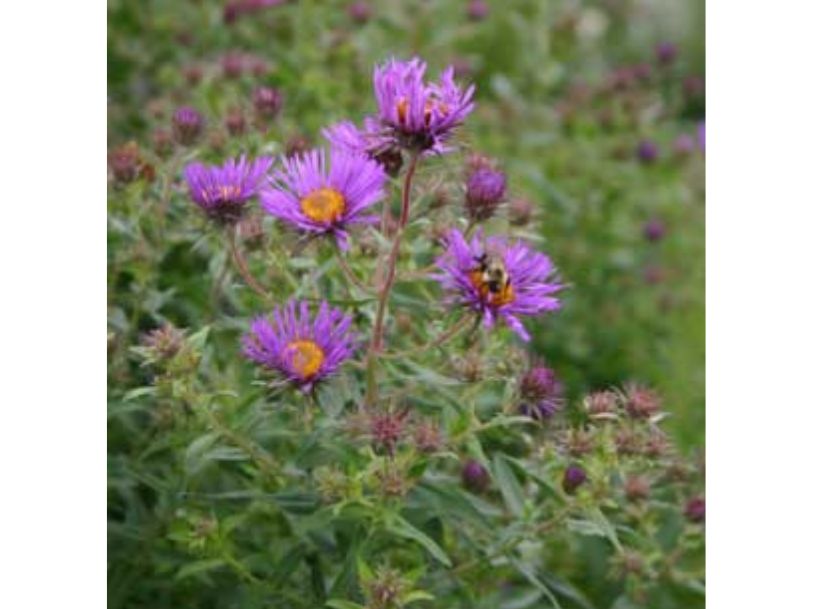
- Add some features, such as bird baths, butterfly salt licks, or nesting boxes, to your yard to make it more attractive to wildlife.
- Use organic or “hands on” methods to control pests. More pesticides per hectare are used on people’s gardens than on cropland. We often forget that insecticides kill more than just crop pests-they also kill the beneficial pollinators that we depend on to produce much of our food. Neonicotinoids appear to be particularly harmful to bees (read more). Children and pets are also more vulnerable to the dangers that these chemicals pose.
- Compost your kitchen scraps and yard waste (i.e. leaves, grass clippings, dead plants) to obtain cheap, organic garden fertilizer. Artificial fertilizers require lots of fossil fuel energy to produce and, when used incorrectly and excessively, contribute to the pollution of local lakes and rivers. Use the compost in your vegetable garden, flower beds, or sprinkled evenly over your lawn.
Image: Asters provide colour in your garden in the fall and are popular with bees and butterflies.
- Remember to put your yard waste out for collection along with your recyclables and garbage if you live in Winnipeg.
- For more information on green gardening pick up the “Naturescape Manitoba” book published by the Manitoba Naturalists Society (Nature Manitoba).

Dr. Diana Bizecki Robson
Curator of Botany
Dr. Bizecki Robson obtained a Master’s Degree in Plant Ecology at the University of Saskatchewan studying rare plants of the mixed grass prairies. After working as an environmental consultant and sessional lecturer…
Meet Dr. Bizecki Robson



